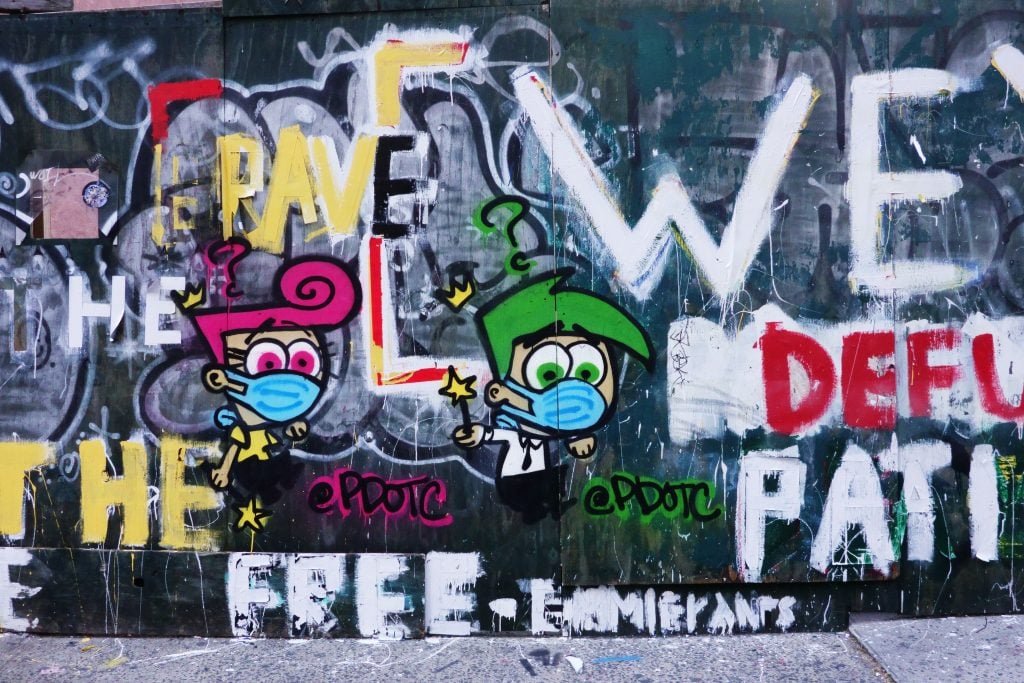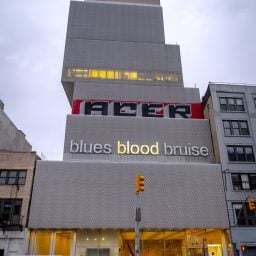It’s part and parcel of the trade: If you’re a street artist, your work won’t last forever. It will corrode with the elements, it might be knocked down along with the building, and will probably be hit with graffiti tags.
Given the increasing popularity—and market value—of street artists like Banksy, a team of scientists have created a new way to clean vandalized street art, reports Ars Technica.
“There is a need now for conservators and restorers to begin to think about how we can preserve pieces of street art,” said chemist Michele Baglioni, one of the researchers unveiling the (environmentally friendly) method at this year’s American Chemical Science conference.
“The main problem with preserving street art,” he added, “[is] it’s usually done with materials that are not intended to last long, and it’s accessible by people, not conserved in an enclosed and protected environment—anyone can go and paint over it.”
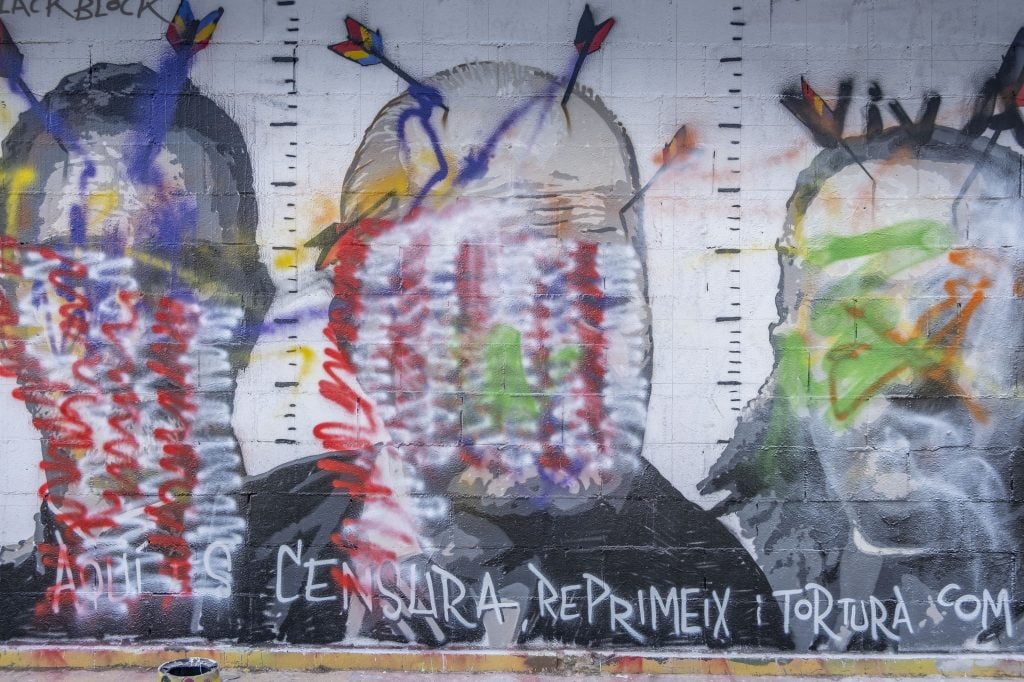
Defaced street art by the artist Rock Black Block. Photo by Paco Freire/SOPA Images/LightRocket via Getty Images.
One of the biggest challenges is removing overpainting without damaging the underlying work, “because, from a chemical standpoint, the materials of the actual piece of street art are almost the same as the overpaint,” Baglioni said.
The researchers developed a new system using low-toxicity solvents to give conservators control over how the cleaning agent is applied, and to make it possible to clean just the top layer of paint.
After formulating a nanostructured cleaning combination, they loaded that solvent into a highly retentive hydrogel, printed in thin sheets only a few microns thick. Once applied to the overpainting, the hydrogel slowly releases the solvent, softening and swelling the top layer of overpaint without penetrating the mural below. After a few minutes, the offending paint can be easily scraped away.
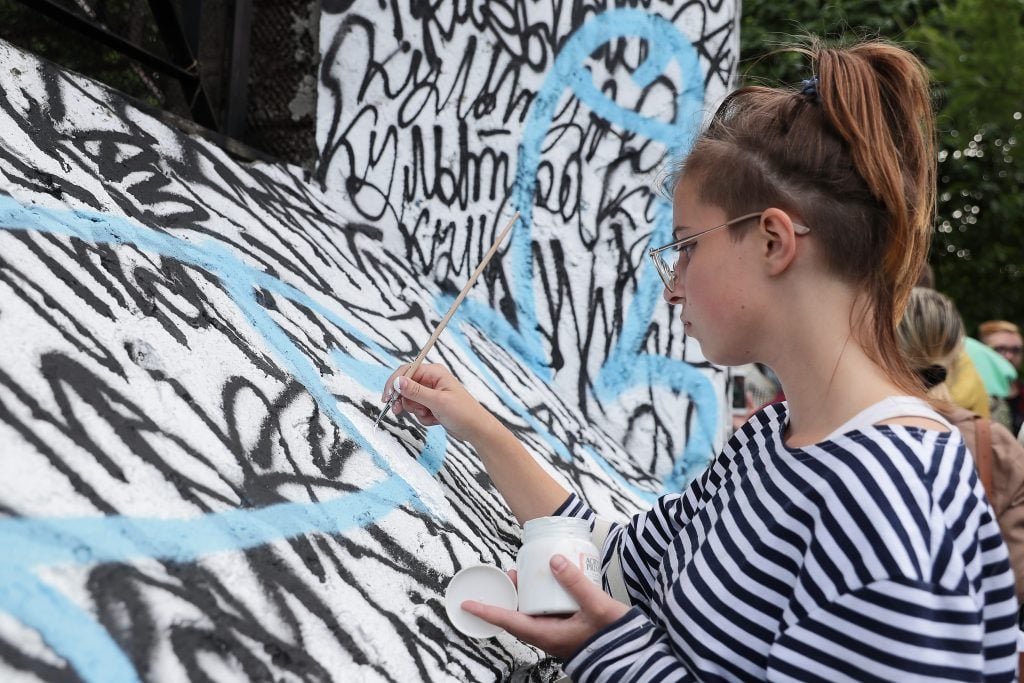
Volunteers restore an artwork by Russian calligrapher Pokras Lampas (Arseny Pyzhenkov) in a public garden by the Drama Theatre. Photo by Donat Sorokin/TASS via Getty Images.
There are already some products on the market to protect street art from graffiti before it happens, such as MuralShield, which claims to chemically fuse paint layers to protect murals from vandals, weathering, and sun damage, and allow restorers to wipe away overpainting.
Meanwhile, Goldman Global Arts has been using an anti-graffiti coating for its rotating display of artworks on the Houston Bowery Wall in New York.
“The two-part varnish provides a thick, candy-coated clear shell over the mural and provides a barrier of protection from vandalization,” the wall’s project manager, Troy Kelley, told Artnet News in an email. “The amount of creativity, time, and work that goes into these murals makes it so important for our team to keep them protected.”
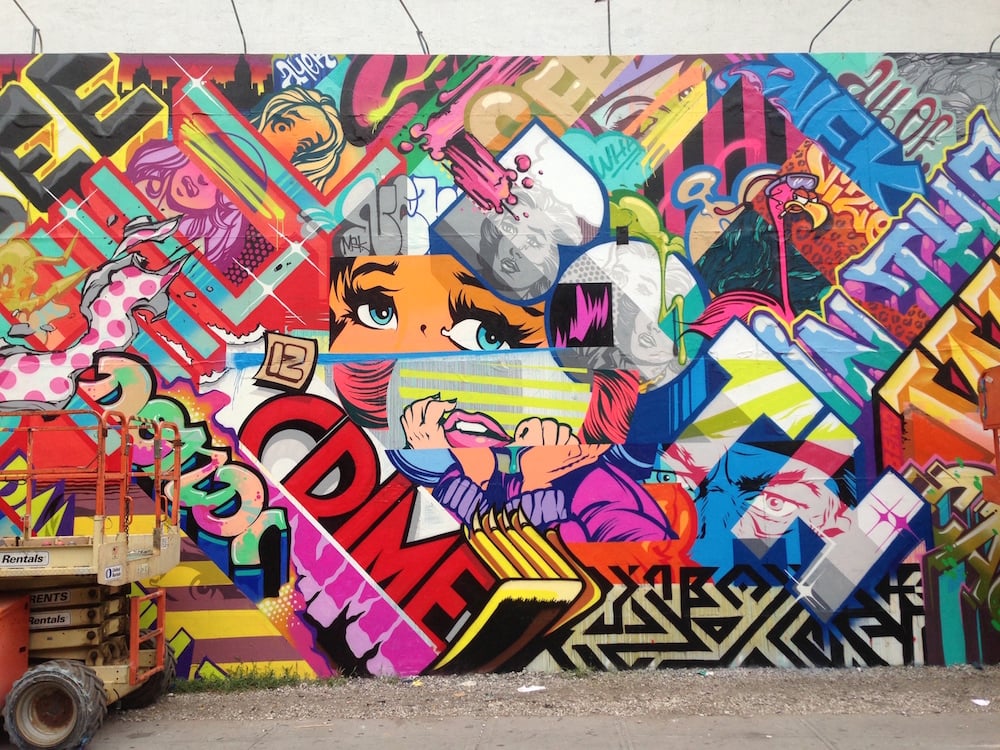
Collaborative mural painted by Pose with Revok in 2013 on a wall at Houston and Bowery. Photo courtesy of the artists.
Some street artists have been doing battle with graffiti for decades. “I’ve had to reclaim and repair my street art spots countless times,” veteran street artist Shepard Fairey told Artnet News. “If an artist chooses to protect their work through vigilant maintenance or the use of a protective product, I respect that. Even though I accept the defiant and competitive nature of street art and graffiti culture, in my opinion, there are always more places to get up than just over another artist’s work.”
Other artists have no problem with their work being painted over. Adrian Wilson has painted 12 murals on the roll-down gate of the Bowery Martial Arts Supplies store in Soho for the Lisa Project since September, sometimes replacing them once they’ve been defaced.
A recent piece, titled #StopAsianHate, of a girl releasing Chinese lantern in the style of Banksy’s Balloon Girl, was tagged three separate times over the course of five weeks, the last so badly it wasn’t able to be repainted.

Adrian Wilson, #StopAsianHate (2021). Photo courtesy of the artist.
“Ultimately, the street is an ever changing place, and I believe art and graffiti should reflect that,” Wilson told Artnet News in a Instagram message. “Of course there are spectacular murals and graffiti that remain intact because they are respected by the street art graffiti community, but anyone who paints on the street should move on to indoor or canvas work if they can’t deal with the inevitability of having their work destroyed.”
And it happens even to the most famous of artists. A new work by Banksy in Bristol was tagged shortly after its creation for Valentine’s Day—perhaps by a graffiti artist eager to piggyback off his notoriety.
“I’m kind of glad the piece in Barton Hill got vandalized,” Banksy said on Instagram. “The initial sketch was a lot better.”
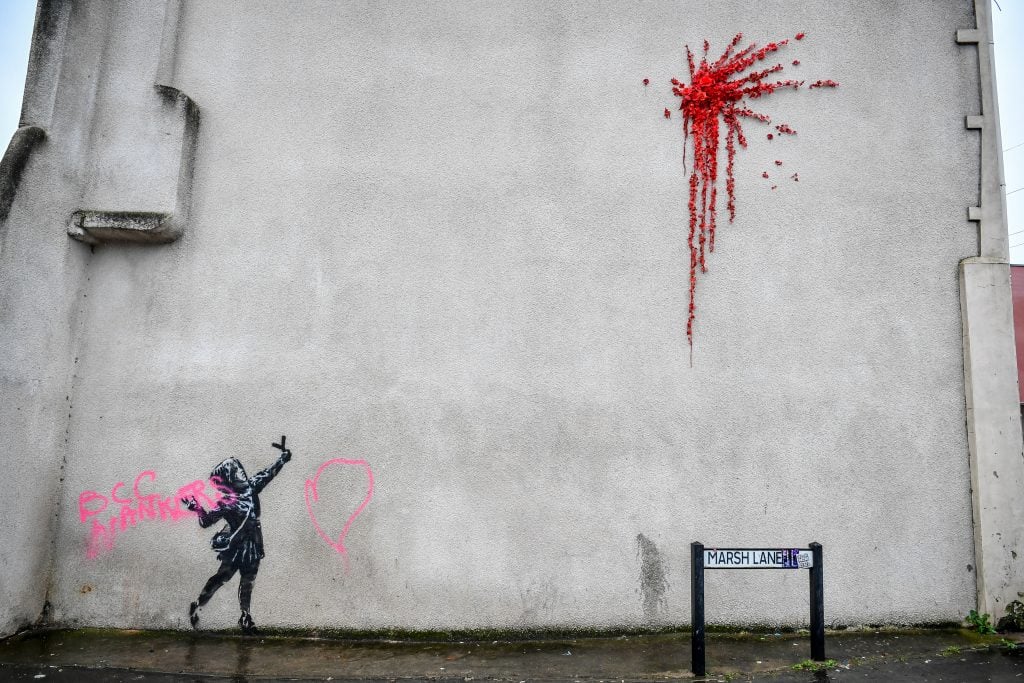
A Banksy work of art on the side of a house on Marsh Lane, Barton Hill, Bristol, was vandalized with pink spray paint the day after it was unveiled for Valentine’s Day. Photo by Ben Birchall/PA Images via Getty Images.
But for those artists wishing to reclaim their work from tags, the scientists hope to offer a new solution.
So far, they’ve conducted testing on different kinds of paint, based on acrylic, vinyl, and alkyd polymers binders, and developed a cleaner that works on all three. The resulting method could potentially even be used to conserve traditional paintings on canvas or panel, as well as street art.
“We hope,” Baglioni said, “that the whole conservation community will benefit from the development of our systems.”
